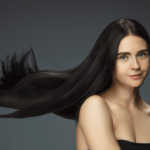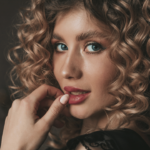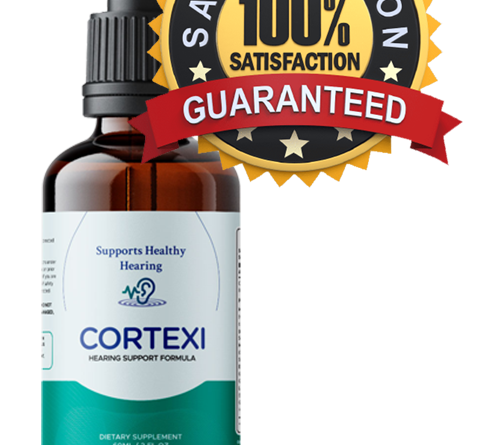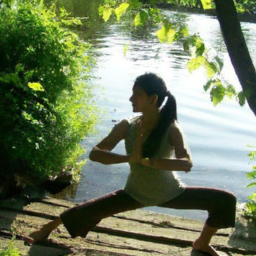
Disclaimer: This post may contain affiliate links. As an Amazon Associate, we earn from qualifying purchases.
Are you ready to uncover the hidden knowledge behind basic hair care? Get ready to embark on a journey and unlock the secrets that will revolutionize your hair care routine. In this guide, we will delve into the essentials of basic hair care, empowering you to achieve healthy, luscious locks.
From cleansing to conditioning, styling to maintaining, we will equip you with all the necessary tools and insights to transform your hair game. Say goodbye to dull, lifeless hair and hello to a vibrant, radiant mane that will make heads turn. Whether you have curly, straight, or wavy hair, these secrets will work wonders for any hair type. Get ready to embark on this hair care adventure and embrace a whole new level of hair confidence. So, why wait? Let’s dive into the world of basic hair care and unlock the secrets to fabulous hair!
Understanding Hair Basics
When it comes to basic hair care, it is crucial to have a solid understanding of the basics. Knowing the structure of your hair and understanding its growth cycle can help you make informed decisions about the products and treatments that are best suited for your hair type. Additionally, being aware of the various factors that can affect hair health allows you to take preventative measures to maintain strong and vibrant locks.
The Structure of Hair
Hair is composed of two main parts: the hair shaft and the hair follicle. The hair shaft is the visible part of the hair that protrudes from the scalp, while the hair follicle is the tiny pocket within the scalp from which the hair grows. The hair shaft is made up of a protein called keratin, which gives it its strength and elasticity.
Hair Growth Cycle
Understanding the hair growth cycle is essential for nurturing healthy hair. The hair growth cycle consists of three main stages: anagen, catagen, and telogen. During the anagen phase, which can last for several years, the hair follicles actively produce new hair cells. The catagen phase is a transitional period when hair growth slows down, and the hair follicles begin to shrink. Finally, during the telogen phase, also known as the resting phase, the hair follicles are at rest, and old hairs are shed to make way for new ones.
Factors Affecting Hair Health
Various factors can influence the health of your hair. These can include genetics, environmental factors, and lifestyle choices. Genetics play a significant role in determining hair thickness, texture, and growth patterns. Environmental factors, such as exposure to sunlight or harsh pollutants, can damage the hair cuticle, leading to dryness and brittleness. Lifestyle choices, such as diet, stress levels, and hair care practices, also impact the overall health of your hair.
Daily Hair Care Routine
Establishing a daily basic hair care routine is key to maintaining healthy and lustrous hair. By following a few simple steps and using the right products, you can keep your hair looking its best.
Choosing the Right Shampoo and Conditioner
Selecting a shampoo and conditioner that cater to your hair type is essential. Different hair types have varying needs, and using products specifically formulated for your hair type can help address these concerns. Whether your hair is dry, oily, or color-treated, there are shampoos and conditioners available that can meet your specific requirements.
Proper Washing Techniques
It is important to wash your hair properly to ensure effective cleansing without causing damage. Start by wetting your hair thoroughly, then applying shampoo and lathering it gently into your scalp. Avoid using excessive force or rubbing vigorously, as this can lead to breakage. Rinse out the shampoo completely before applying conditioner, focusing on the lengths and ends of your hair. Leave the conditioner in for a few minutes before rinsing it out thoroughly.
Benefits of Regular Conditioning
Conditioning is an essential part of any basic hair care routine as it helps to restore moisture, detangle hair, and promote shine and manageability. Regular conditioning can improve the overall texture and health of your hair. Use a conditioner that is suitable for your hair type and focus on applying it to the ends of your hair, as this is where it tends to be driest.
Towel Drying and Brushing
After washing your hair, avoid rough towel drying, as this can create friction and lead to breakage. Instead, gently squeeze out excess moisture and then pat dry with a soft towel. When it comes to brushing, use a wide-toothed comb or a brush with soft bristles to detangle your hair. Start from the ends and work your way up to the roots to minimize pulling and damage.
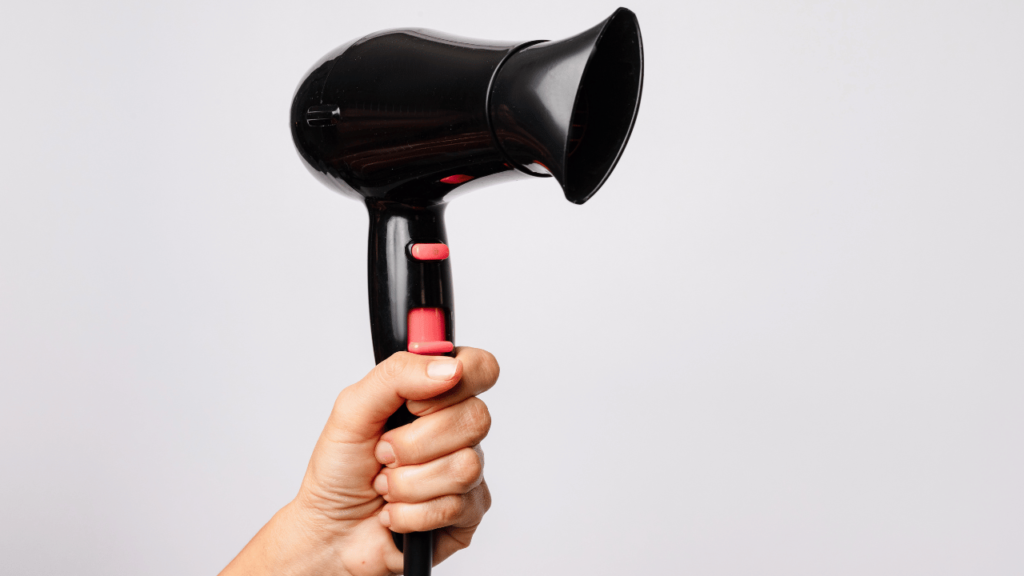 Protecting Hair from Heat and Styling Damage
Protecting Hair from Heat and Styling Damage
Excessive heat styling can cause significant damage to your hair. To protect your locks, use heat protectant sprays or serums before using hot tools such as straighteners or curling irons. Additionally, try to limit the frequency of heat styling and opt for heat-free hairstyles whenever possible. Giving your hair occasional breaks from excessive styling can help minimize damage and promote healthier hair.
Nourishing Your Hair
In addition to establishing a daily basic hair care routine, nourishing your hair from within is equally important. A well-balanced diet, essential nutrients, proper hydration, and the use of natural remedies and hair masks can all contribute to maintaining the health and vitality of your hair.
Importance of a Balanced Diet
A balanced diet plays a crucial role in the overall health of your hair. Foods rich in protein, such as lean meats, fish, eggs, and legumes, provide the necessary building blocks for hair growth and strength. Incorporating fruits and vegetables into your diet ensures a sufficient intake of vitamins and minerals essential for hair health. Additionally, healthy fats found in nuts, seeds, and avocados help nourish the scalp and promote shiny hair.
Essential Nutrients for Healthy Hair
Several nutrients are particularly beneficial for promoting healthy hair. Biotin, also known as vitamin B7, is involved in the production of keratin and can help strengthen hair strands. Foods rich in biotin include eggs, nuts, and sweet potatoes. Omega-3 fatty acids, found in fatty fish like salmon and mackerel, help nourish the scalp and maintain healthy hair follicles. Iron, zinc, and vitamin C are also important for hair health and can be obtained from sources such as spinach, lentils, and citrus fruits.
Hydration and Hair Health
Proper hydration is not only essential for overall health but also crucial for maintaining hair health. Dehydration can cause hair to become dry and brittle, making it more prone to breakage. Ensure you drink an adequate amount of water daily to keep both your body and your hair properly hydrated. Additionally, using a moisturizing hair mask or oil treatment can help restore moisture to dry and damaged hair.
Natural Remedies and Hair Masks
Incorporating natural remedies and hair masks into your basic hair care routine can provide additional nourishment and address specific hair concerns. For example, aloe vera gel can soothe an irritated scalp and promote hair growth. Coconut oil is known for its moisturizing properties and can help repair damaged hair. Avocado and banana hair masks can provide deep conditioning and hydration, leaving your hair soft and manageable. Exploring these natural remedies can be a fun and effective way to enhance your hair care routine.
Managing Common Hair Issues
Despite our best efforts, various hair issues can arise from time to time. However, with the right knowledge and approaches, these issues can be managed effectively.
Dealing with Dandruff
Dandruff, characterized by dry and flaky scalp, can be a common nuisance. Using anti-dandruff shampoos containing ingredients such as zinc pyrithione, salicylic acid, or ketoconazole can help control dandruff. Regularly washing your hair, avoiding excessive use of styling products, and maintaining good scalp hygiene can also contribute to minimizing dandruff.
Managing Frizzy Hair
Frizzy hair can be frustrating to deal with, especially in humid weather. To manage frizz, it is essential to keep your hair adequately moisturized. Using leave-in conditioners or anti-frizz serums can help smooth the hair cuticle and reduce frizz. Additionally, consider using a wide-toothed comb or your fingers to detangle your hair gently and minimize breakage.
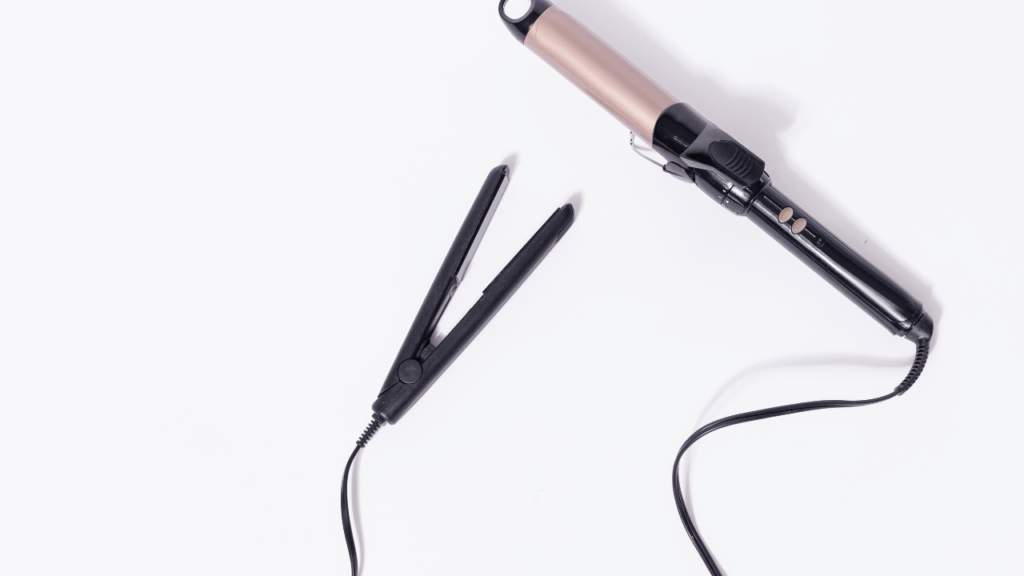 Preventing Split Ends
Preventing Split Ends
Split ends are a common hair issue caused by excessive heat, chemical treatments, or mechanical damage. To prevent split ends, ensure you trim your hair regularly to get rid of damaged ends. Minimize the use of hot tools and opt for heat-free styling methods whenever possible. Applying a small amount of oil or serum to the ends of your hair can also help prevent further splitting and breakage.
Tackling Hair Loss
Hair loss can have various causes, ranging from hormonal imbalances to genetics and stress. If you experience significant hair loss, it is advisable to consult a healthcare professional to determine the underlying cause and explore the most appropriate treatment options. Additionally, maintaining a healthy lifestyle, managing stress levels, and avoiding excessive heat and chemical treatments can all contribute to maintaining a healthy head of hair.
Addressing Oily Scalp
An oily scalp can make your hair feel greasy and flat. To address an oily scalp, try using shampoos specifically formulated for oily hair or those containing ingredients like tea tree oil or salicylic acid. These ingredients can help regulate sebum production and keep your scalp balanced. Avoid over-washing your hair, as this can strip the scalp of its natural oils, leading to increased oil production.
Protecting Hair from Environmental Stressors
Environmental stressors, such as sunlight, chlorine in swimming pools, harsh winter conditions, and high humidity, can all impact the health and appearance of your hair. Taking appropriate measures to protect your hair can help minimize these effects.
Shielding Your Hair from UV Rays
Exposure to sunlight can cause significant damage to your hair, including dryness, color fading, and weakened strands. To shield your hair from UV rays, consider wearing a hat or scarf when spending extended periods outdoors. Additionally, using hair products containing UV filters can provide an extra layer of protection.
Minimizing Chlorine Damage
Chlorine in swimming pools can strip the hair of its natural oils, leaving it dry and brittle. To minimize chlorine damage, wet your hair thoroughly before entering the pool to prevent it from absorbing excessive amounts of chlorinated water. After swimming, rinse your hair with fresh water and use a clarifying shampoo to remove chlorine buildup. Applying a leave-in conditioner can help restore moisture to your hair.
Winter Hair Care Tips
During the winter months, cold and dry air can cause hair to become more prone to dryness and static. To combat these effects, use a moisturizing shampoo and conditioner to help nourish your hair. Avoid exposing your hair to excessive heat from hair dryers or hot styling tools, as this can exacerbate dryness. Additionally, wearing hats or scarves can provide an extra layer of protection against the cold and prevent moisture loss.
Handling Humidity
High humidity levels can lead to frizzy hair and a lack of manageability. To combat the effects of humidity, consider using anti-frizz products that help seal the hair cuticle and prevent excess moisture from entering the hair shaft. Opting for hairstyles that work with the natural texture of your hair, such as braids or updos, can also help manage frizz and keep your hair looking stylish.
Styles and Hair Accessories
Enhancing your personal style and experimenting with different hairstyles can be a fun and creative way to express yourself. However, it is important to choose hairstyles and hair accessories that complement your hair type and promote hair health.
Choosing Hairstyles for Different Hair Types
Different hair types have different needs and styles that work best for them. For example, individuals with curly or textured hair may opt for styles that enhance and embrace their natural texture, such as loose curls or bouncy afros. On the other hand, those with fine or straight hair may prefer sleek and polished hairstyles, such as a classic bob or a sleek ponytail. Understanding your hair type and embracing its unique characteristics can help you make informed decisions about the most flattering hairstyles for you.
Exploring Hair Accessories for Basic Hair Care
Hair accessories can add a touch of style and personality to any hairstyle. From colorful hair clips to elegant headbands, there is a wide range of accessories available to suit various tastes and occasions. When choosing hair accessories, consider their suitability for your hair type and the level of comfort they provide. Avoid accessories that can cause excessive tension or breakage, and opt for those that secure comfortably and allow for easy removal.
Best Practices for Hair Coloring
Hair coloring can be a great way to change your look and add vibrancy to your hair. However, it is important to follow best practices to minimize damage and maintain healthy hair. If you decide to color your hair, consider consulting a professional colorist who can assess your hair’s condition and recommend appropriate techniques and products. Regular deep conditioning treatments and the use of color-protecting shampoos and conditioners can help preserve the color and minimize fading.
Pros and Cons of Hair Extensions
Hair extensions can provide instant length and volume, allowing for a wide range of versatile hairstyles. However, it is important to weigh the pros and cons before deciding to wear hair extensions. While they can enhance your look, improper installation or maintenance can lead to damage and breakage. If you choose to wear hair extensions, ensure they are applied and maintained by a professional to minimize the risk of damage. Additionally, giving your natural hair regular breaks from extensions can help prevent strain and promote overall hair health.
Basic Hair Care for Specific Needs
Different individuals have different hair care needs depending on factors such as hair texture, gender, life stage, and specific conditions. Tailoring your basic hair care routine to suit these needs can lead to better results and overall hair health.
Caring for Curly or Textured Hair
Curly or textured hair requires special care to enhance its natural beauty and manage its unique challenges. Avoid overwashing curly hair, as this can strip it of moisture and lead to dryness. Opt for sulfate-free shampoos and conditioners that provide hydration and definition. Regular deep conditioning treatments can help nourish and enhance the natural curls. Additionally, using wide-toothed combs or your fingers to detangle curly hair gently can minimize breakage and preserve curl formation.
Basic Hair Care Tips for Men
Men often have specific hair care needs, particularly when it comes to grooming facial hair and maintaining a healthy scalp. When washing facial hair, use a mild cleanser, and consider applying a beard oil or balm to keep it moisturized and manageable. For scalp health, choose a shampoo and conditioner that address any specific concerns, such as dandruff or oily scalp. Regular scalp massages can help stimulate blood flow and promote healthy hair growth.
Hair Care during Pregnancy
During pregnancy, changes in hormonal levels can affect the condition and texture of your hair. To maintain healthy hair during this time, opt for gentle hair care products and avoid using harsh chemicals or treatments. Eating a balanced diet and staying hydrated can also contribute to hair health. Additionally, it is not uncommon for pregnant women to experience increased hair shedding after childbirth. This is usually temporary and can be managed with a healthy hair care routine.
Basic Hair Care for Aging Hair
As we age, our hair undergoes changes that require specific attention and care. Aging hair tends to become thinner, drier, and more prone to breakage. To keep aging hair healthy, opt for gentle shampoos and conditioners that provide hydration and volume. Regular trims can help eliminate split ends and maintain a polished appearance. Additionally, using serums or hair oils can help nourish and protect aging hair from environmental stressors.
Professional Hair Treatments
In addition to your basic hair care routine, professional hair treatments can provide extra care and pampering for your hair. Salon treatments, regular trims, deep conditioning, hair spa and scalp treatments, and oiling and massages can all contribute to healthier and more luxurious hair.
Understanding Salon Treatments
Salon treatments offer a range of options for addressing specific hair concerns. For example, keratin treatments can help smooth frizzy hair and reduce styling time, while scalp treatments can target issues such as dryness or dandruff. Consult with a professional stylist or hairdresser to determine the most suitable salon treatments for your hair and desired results.
Benefits of Regular Trims
Regular trims are essential for maintaining healthy hair, even if you are trying to grow it longer. Trimming the ends of your hair removes split ends and prevents them from traveling up the hair shaft, leading to further damage. Aim to get a trim every 6-8 weeks to keep your hair looking fresh and prevent breakage.
Deep Conditioning and Hair Masks
Deep conditioning treatments and hair masks can provide intense hydration and nourishment to your hair. These treatments penetrate deep into the hair shaft, restoring moisture and repairing damage. Depending on your hair type and concerns, you can choose from a variety of deep conditioning treatments or opt for DIY hair masks using natural ingredients such as honey, avocado, or yogurt.
Hair Spa and Scalp Treatments
Hair spa treatments focus on rejuvenating the hair and scalp. These treatments often involve a combination of massage, conditioning, and steaming techniques to promote relaxation and stimulate blood circulation. By nourishing the hair follicles and providing essential nutrients, hair spa treatments can help revitalize your hair and improve its overall health.
Hair Oiling and Massages
Hair oiling and massages have been used for centuries to promote hair growth and maintain healthy tresses. Massaging the scalp helps improve blood circulation, which in turn stimulates hair follicles and promotes hair growth. Using natural oils, such as coconut oil or argan oil, can help moisturize the scalp and nourish the hair strands. Incorporating these practices into your basic hair care routine can provide numerous benefits and contribute to healthier hair.
Basic Hair Care Myths Debunked
The world of hair care is filled with various myths and misconceptions. It is important to separate fact from fiction to make informed decisions about your basic hair care routine. Let’s debunk some common hair care myths:
Busting Common Hair Care Misconceptions
Myth: Cutting your hair makes it grow faster. Reality: Cutting your hair does not affect its growth rate. However, regular trims can help prevent split ends, promoting healthier hair growth.
Myth: More shampoo equals cleaner hair. Reality: Using excessive amounts of shampoo can strip your hair of natural oils and cause dryness. Use a small amount of shampoo and focus on cleansing your scalp.
Myth: Brushing your hair 100 times a day makes it healthier. Reality: Excessive brushing can actually cause breakage and damage to your hair. Brush your hair gently and only when necessary to avoid unnecessary strain.
Unveiling Hair Growth Myths
Myth: Massaging your scalp with certain oils can make your hair grow faster. Reality: Scalp massages can improve blood circulation, but they do not directly influence the rate of hair growth. Hair growth is primarily determined by genetics and other internal factors.
Myth: Shaving your head will make your hair grow back thicker. Reality: Shaving does not change the thickness or density of your hair. The appearance of thicker hair after shaving is simply due to the fact that newly grown hair has a blunt end.
Myth: Split ends can be repaired with the right products. Reality: Once a hair strand has split, the only way to get rid of the split end is by trimming it. While using nourishing products can help prevent split ends, they cannot repair existing damage.
Taking a Holistic Approach
When it comes to maintaining healthy hair, taking a holistic approach is essential. Hair health is not solely determined by external factors but also influenced by your overall well-being.
Mindfulness and Hair Health
Practicing mindfulness can contribute to hair health by reducing stress levels. High-stress levels can lead to hair loss, scalp issues, and other hair concerns. Engaging in stress-reducing activities such as meditation, yoga, or spending time in nature can help promote a healthy mind and, consequently, healthier hair.
Stress Management for Healthy Hair
Managing stress is crucial for maintaining healthy hair. Stress can disrupt the hair growth cycle, leading to hair loss or stunted growth. Explore stress management techniques such as exercise, deep breathing exercises, or talking to a trusted friend or professional to help reduce stress levels and promote overall well-being.
Importance of Adequate Sleep
Getting enough sleep is vital for your overall health, including the health of your hair. During sleep, your body goes into a repair and rejuvenation mode, which applies to your hair as well. Lack of sleep can lead to increased hair shedding, dullness, and slower hair growth. Aim for 7-9 hours of quality sleep each night to ensure your body and hair receive the rest they need.
By understanding basic hair care, establishing a daily hair care routine, nourishing your hair from within, managing common hair issues, protecting your hair from environmental stressors, exploring different styles and accessories, tailoring your hair care to specific needs, considering professional treatments, debunking hair care myths, and adopting a holistic approach, you can unlock the secrets of basic hair care and enjoy healthy, beautiful, and resilient hair. Remember, each individual’s hair journey is unique, so find what works best for you and embrace the process of discovering the perfect hair care routine that suits your needs.
As an Amazon Associate, we earn from qualifying purchases.



